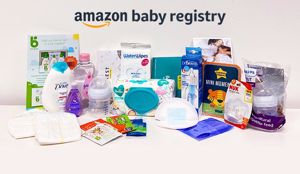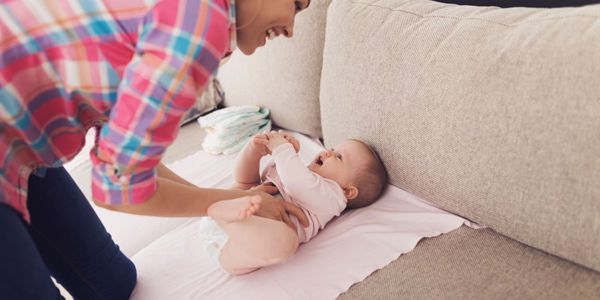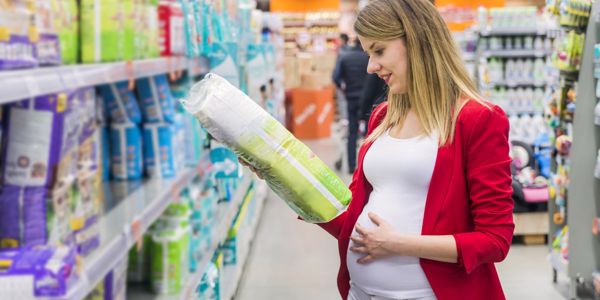Any new parent preparing for a newborn will face the question of sleeping arrangements for their baby. Aside from a car seat, your baby's bed is arguably one of the most important "big ticket" items needed. You want to choose a safe, comfortable option that won't break the bank. So, if you're working on a registry or shopping for a baby bed, here are some thoughts you may want to remember along the way!
Location, Location, Location
Having a separate bedroom for your baby where they sleep alone and independently from day one is a highly Westernized and relatively modern idea. In reality, research shows that the rest of the world has it right with this one, and it's ideal for newborns to sleep in the same room as their parent(s). Keeping your baby in the same room as you until they are at least six months (ideally a year) has been coordinated with the reduction of Sudden Infant Death Syndrome (SIDS). Aside from this obvious potentially life-saving benefit, there are other bonuses to bunking with your baby!
Benefits of Room-sharing:
- It increases the ease of breastfeeding readily.
- It adds the ability to respond quickly to your baby's cries, possibly before they've fully woken up.
- It puts parent's minds at ease as they can check on the baby anytime.
- More sleep for everyone as there is less traveling back and forth between rooms and no unnecessary wake-ups if the baby self-soothes quickly.
- There is an increased bonding as the physical proximity prompts emotional closeness.
By The Bed, But Not In The Bed
The topic of co-sleeping (or, more specifically, bed-sharing) will surely cause all kinds of disruption in your local parenting Facebook group. There are plenty of opinions and parents with a wide range of personal experiences that can leave any new parent wondering what to do.
There is some research that shows the possibility of safe bed-sharing, but the risks are too extreme for most doctors to confidently recommend this sleeping arrangement. Instead, most medical professionals and safe-sleep experts have adopted a policy of recommending a co-sleeping arrangement that has infants within arms-reach of their parents but not in range of the dangers that an adult-sized bed may impose, such as suffocation under heavy blankets or falling between the mattress and headboard.
Cribs vs. Bassinets vs. Porta-Cribs
Those magazine-worthy nursery pictures on Pinterest can have you drooling over designer cribs with matching sheets or gazing at the gentle lighting flowing perfectly onto precious bassinets stationed meticulously next to a staged king-sized bed, but in reality, what is the best option for your baby's bed?
Baby Cribs
Cribs are the classic choice for a reason! They provide a safe, stable place for your growing baby to sleep well into their toddler years. There are also many transitioning crib options that can transform into toddler beds or even become headboards and footboards for twin or full-sized beds. If you plan to have multiple children, a sturdy heirloom crib can be a wise investment! Plus, what better statement piece for your baby's room than a beautiful crib?!
Bassinets
When you bring home your tiny newborn, it can be hard to lay them down in a giant crib! The space can feel like it’s going to “swallow up” your baby. While cribs are perfectly safe for newborns, parents may feel more comfortable placing their baby in a smaller, more intimate setting. Another benefit of bassinets is their size, which can more easily allow for room-sharing for those parents who wish to keep their newborn nearby during the night. Bassinets can come at a lower price point than full-sized cribs, which may make them a good option for families who are limited on their initial budget and not ready to invest in a larger bed for their baby just yet.
Porta-Cribs
If you do opt to room-share for the first six months to a year, your bedroom may not have the square footage to accommodate a full-size crib. Babies out-grow bassinets relatively quickly, so a porta-crib can provide the best of both worlds! Small enough to accommodate modest spaces but sturdy enough to hold babies as they grow and eventually begin sitting up or standing, porta-cribs give parents a balance of convenience with safety that can generate great peace of mind. Porta-cribs are also ideal for families with flexible living situations or with home offices in the room the baby sleeps in during the night so that the baby’s bed can be moved as necessary.
Babies have no opinion on their bed's size or style. Their only concern is being comfortable and fed! And as fun as it is to find a beautiful or trendy sleeping place for your baby, safety and sustainability are the biggest factors. Think about what your nights with your baby will look like realistically, and choose a bed that will fit both physically and logistically into your family’s lifestyle. You will all be catching Zzz’s in no time!







